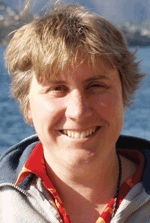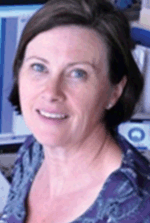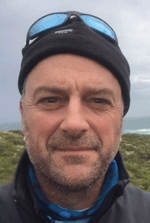Navigating the Great Australian Bight using system models
Elizabeth A. Fulton A B D , Cathy M. Bulman A and Simon Goldsworthy C
A CSIRO Oceans and Atmosphere, GPO Box 1538, Hobart, Tas. 7001, Australia.
B Centre for Marine Socioecology, University of Tasmania, Hobart, Tas. 7004, Australia.
C South Australian Research and Development Institute (SARDI), Aquatic Sciences, 2 Hamra Avenue, West Beach, SA 5024, Australia.
D Corresponding author. Email: beth.fulton@csiro.au
The APPEA Journal 58(2) 553-556 https://doi.org/10.1071/AJ17133
Accepted: 22 February 2018 Published: 28 May 2018
Abstract
The expanding blue economy means the oil and gas industry is just one of many activities in marine and coastal ecosystems. The future management of ecosystems such as the Great Australian Bight (GAB) should be based on a sound knowledge of the physical, ecological, economic and social interactions among the human and natural system components. The Great Australian Bight Research Program (GABRP) has generated extensive new knowledge about the GAB system, making it one of the most well understood deep-water Australian ecosystems. It is a complicated system, with novel and newly recognised ecosystem pathways. A set of system models have been developed to help navigate this complexity, to integrate the new information and establish improved understanding of system processes and the implications of any activities in the region – including monitoring and management.
Keywords: ecosystem, environment, modelling.

Dr Beth Fulton is a principal research scientist with CSIRO Oceans and Atmosphere where she leads the Marine Ecosystem Modelling and Risk Assessment Group. Beth is also an adjunct professor at the Centre for Marine Socioecology, a collaboration between University of Tasmania, CSIRO and the Australian Antarctic Division. Beth has been with the CSIRO for the past 16 years, where she has developed various system-modelling tools for looking at marine ecosystems and sustainability. Beth received a B.Sc. Hons I, majoring in Marine Biology and Mathematics, from James Cook University, Townsville (1997) and a Ph.D. on ecosystem model complexity from the University of Tasmania (2001). |

Dr Cathy Bulman is a research scientist with CSIRO Oceans and Atmosphere. She is a biologist and ecosystem modeller who leads the Marine Ecosystem Modelling Team. She has more than 20 years’ experience in fisheries science and the ecosystems of temperate Australia. Cathy received her B.Sc. Hons (1981) and Ph.D. (2001) from the Department of Zoology, University of Tasmania. |

Prof Simon Goldsworthy leads the Ecosystem Effects of Fishing and Aquaculture Subprogram, at the South Australian Research and Development Institute (SARDI), Aquatic Sciences Centre in Adelaide, South Australia. For the past 20 years, he has specialised in the ecology of marine mammals and seabirds, ecosystem trophodynamics, the ecological effects of fishing and operational and trophic interactions with fisheries. Simon completed his Ph.D. at Monash University in 1992 on fur seal populations in South Australia and the sub-Antarctic. |
References
Christensen, V., and Walters, C. J. (2004). Ecopath with Ecosim: methods, capabilities and limitations. Ecological Modelling 172, 109–139.| Ecopath with Ecosim: methods, capabilities and limitations.Crossref | GoogleScholarGoogle Scholar |
Fulton, E. A., Link, J. S., Kaplan, I. C., Savina-Rolland, M., Johnson, P., Ainsworth, C., Horne, P., Gorton, R., Gamble, R. J., and Smith, A. D. (2011). Lessons in modelling and management of marine ecosystems: the Atlantis experience. Fish and Fisheries 12, 171–188.
| Lessons in modelling and management of marine ecosystems: the Atlantis experience.Crossref | GoogleScholarGoogle Scholar |
Fulton, E. A., Goldsworthy, S. D., Bulman, C. M., Pethybridge, H. R., and Rogers, P. J. (2017). Knowledge integration of socio-ecological systems of the Great Australian Bight: ecosystem modelling. Final Report on Theme 7.1 of Great Australian Bight Research Program. (SARDI/CSIRO/BP: Adelaide).
Rogers, P. J., Ward, T. M., van Ruth, P. D., Williams, A., Bruce, B. D., Connell, S. D., Currie, D. R., Davies, C. R., Evans, K., Gillanders, B. M., Goldsworthy, S. D., Griffin, D. A., Hardman-Mountford, N. J., Ivey, A. R., Kloser, R. J., Middleton, J. K., Richardson, A. E., Ross, A., Tanner, J. E., and Young, J. (2013). ‘Physical Processes, Biodiversity and Ecology of the Great Australian Bight Region: A Literature Review’. (CSIRO Australia: Hobart.) 197 pp.
Ward, T., Middleton, J., Griffin, D. A., Kloser, R. J., van Ruth, P., Goldsworthy, S. D., Davies, C. R., Williams, A., Tanner, J. E., Ross, A., Young, M., Beer, A., Pascoe, S., Kempton, R., Fulton, E. A., Bulman, C., and Dambacher, J. (2017). Socio-ecological systems of the Great Australian Bight: synthesis of results and findings. Great Australian Bight Research Program, Great Australian Bight Research Program Report Number 28. (SARDI/CSIRO/BP: Adelaide). 136 pp.


